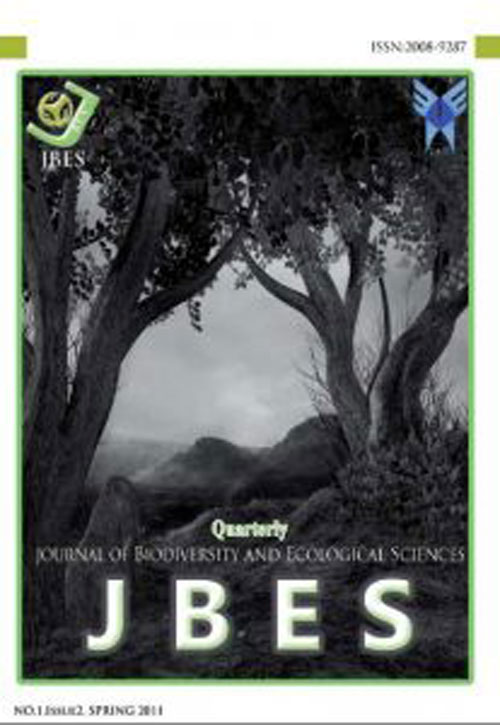Canopy Management In Lac Cultivation for Biodiversity Conservation and Sustainable Livelihood Support
Author(s):
Abstract:
Lac, a resinous exudation of female scale insects, mainly Indian lac insect Kerria lacca Kerr (Tachardiidae: Coccoidea: Homoptera), is an important source of income for the forest dwellers in South Asian countries like India, Thailand, Indonesia, Myanmar and Vietnam. Lac insects thrive on more than 400 planthosts generally growing in the forests which have varied economic, medicinal and social significance. Association of 22 species of predators, 30 species of primary and 45 species of secondary parasites; besides several fungal pathogens with 88 species of lac insect, represent a rich bio-diversity of the lac ecosystem. Lac cultivation requires proper host plant management, especially canopy management to increase biomass for higher productivity. Alternatively, multistory lac cropping by growing mixed but compatible plants having different heights on the same area also provides exciting opportunities of optimum land utilization. Flemingia macrophylla, a multi-purpose bushy plant, has evolved as a potential lac host in the process of exploring suitable hosts with short gestation period and low crown for intensive lac cultivation to overcome the problems of long gestation period, scattered distribution and high crown associated with traditional tree hosts like Kusum (Schleichera oleosa), Palas (Butea monosperma) and Ber (Zizyphus mauritiana). The experiment on this plant was conducted under canopies of Dalbergia sissoo Roxb. in aghani (winter), jethwi (summer) crop of kusmi and katki (rainy) season of rangeeni strain of the lac insect. Survival rate of F. macrophylla was 96% and 100% under control and experimental conditions with 4.41, and 2.77 average numbers of shoots respectively. Mean plant height of F. macrophylla was 60 % more in control (237.46 cm) than understory (141.87 cm). After 75 days of inoculation, density of settlement was higher under control (45.71/cm2, 16.2/cm2) than in understorey (38.05/cm2, 13.5/cm2) for aghani, and katki crop respectively. Whereas, in jethwi crop the scenario was reverse with under-storey (99.9/cm2) having higher than control (82.9/cm2). Sex ratio at 45 days of inoculation was higher in understorey in aghani (13:95 M: F/cm2), jethwi (20:81 M: F/cm2) whereas in katki crop it was higher in control (14:84 M: F/cm2). Lac cell weight after larval emergence was higher in control for all lac crops; aghani (0.02012 g), jethwi (0.0152 g) and katki (0.0313 g) with 307, 262.4 and 315 insects respectively. The average scrap lac yield in control was 166.64 g/plant, 105.36 g/plant, 81.47 g/plant which is 2.6, 3.8, 4.7 times to that in under-storey (63.63 g/plant, 27.58g/plant, 17 g/plant) respectively for these lac crop. Experimental results revealed that though there was significant reduction in the scrap lac yield, lac cultivation is feasible on F. macrophylla in under-storey with host-plant management and improving lighting conditions. With proper canopy management, there is potential of increasing not only its economic viability, but also ecological development via Joint Forest Management through peoples participation in resource generation, management and sharing of benefits. It has potential to arrest deforestation, conserve associated biodiversity and permit gainful utilization of vast natural wealth.
Keywords:
Lac , Aghani , Jethwi , Katki , Flemingia Macrophylla , Dalbergia Sissoo , Kerria Lacca
Language:
English
Published:
Journal of Biodiversity and Ecological Sciences, Volume:3 Issue: 3, 2013
Pages:
104 to 111
magiran.com/p1518942
دانلود و مطالعه متن این مقاله با یکی از روشهای زیر امکان پذیر است:
اشتراک شخصی
با عضویت و پرداخت آنلاین حق اشتراک یکساله به مبلغ 1,390,000ريال میتوانید 70 عنوان مطلب دانلود کنید!
اشتراک سازمانی
به کتابخانه دانشگاه یا محل کار خود پیشنهاد کنید تا اشتراک سازمانی این پایگاه را برای دسترسی نامحدود همه کاربران به متن مطالب تهیه نمایند!
توجه!
- حق عضویت دریافتی صرف حمایت از نشریات عضو و نگهداری، تکمیل و توسعه مگیران میشود.
- پرداخت حق اشتراک و دانلود مقالات اجازه بازنشر آن در سایر رسانههای چاپی و دیجیتال را به کاربر نمیدهد.
In order to view content subscription is required
Personal subscription
Subscribe magiran.com for 70 € euros via PayPal and download 70 articles during a year.
Organization subscription
Please contact us to subscribe your university or library for unlimited access!


